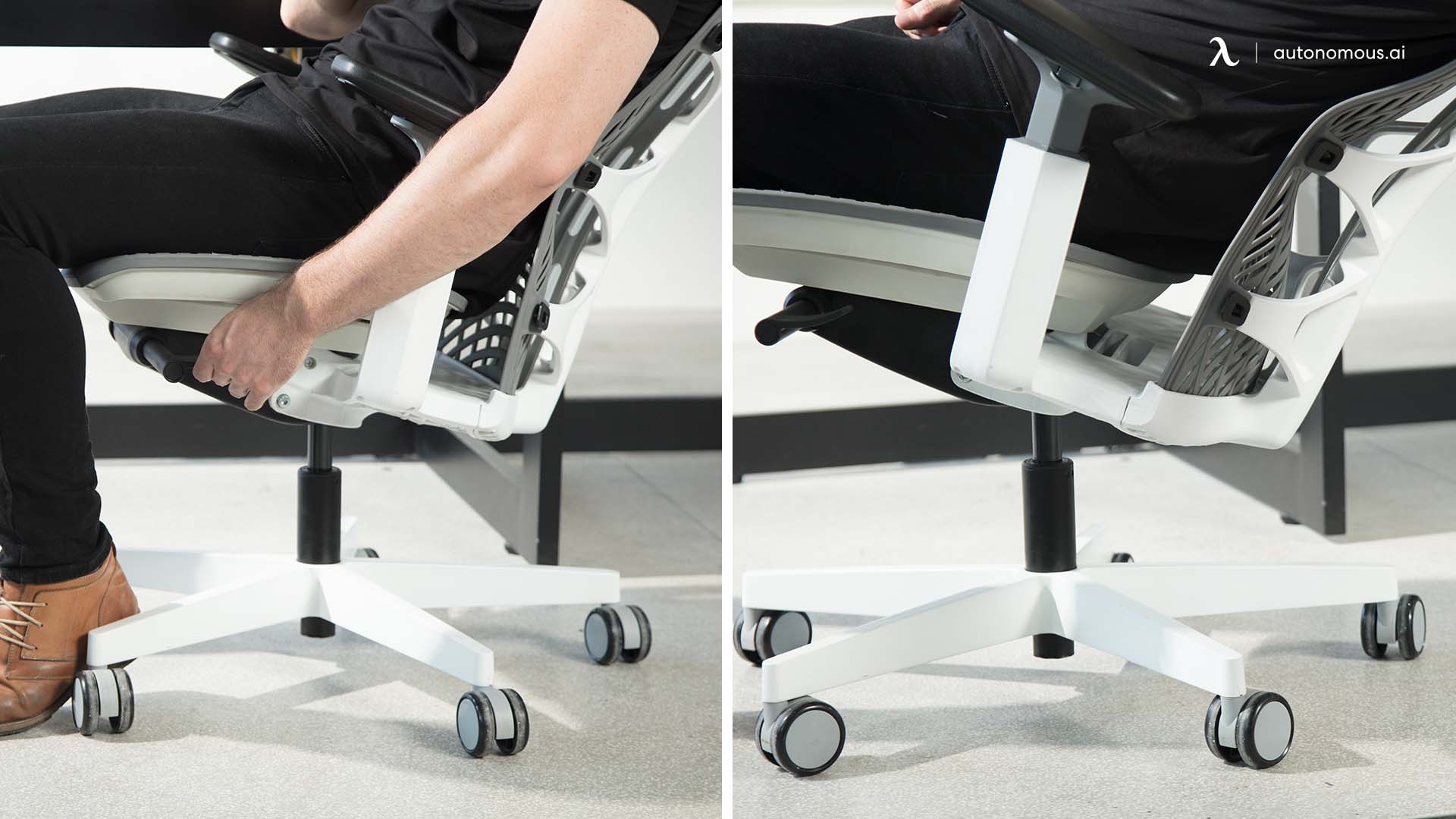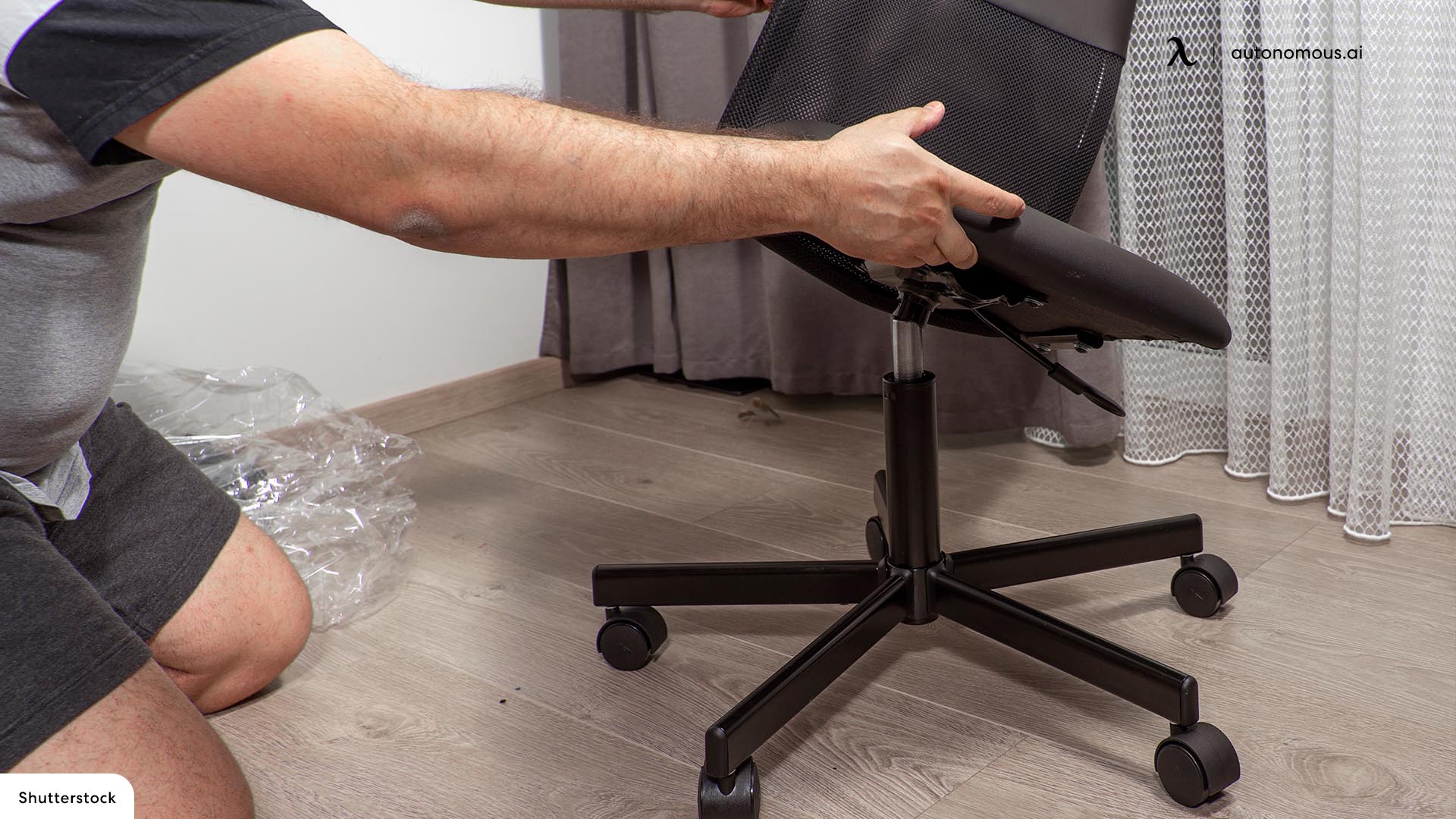Understanding Office Chair Mechanics

To truly appreciate the comfort and functionality of your office chair, it’s essential to understand the mechanics that make it possible. The tilt mechanism, in particular, is a crucial component that allows for personalized comfort and ergonomic support. Let’s delve into the workings of this remarkable feature.
The Tilt Mechanism
The tilt mechanism is a system within the chair that enables the seat to recline or tilt backward, offering a variety of seating positions. It allows you to adjust the chair’s angle to your preference, promoting better posture and reducing strain on your back. Think of it as a dynamic element that adapts to your body’s needs throughout the day.
Types of Tilt Mechanisms
There are several types of tilt mechanisms, each offering a distinct level of functionality and customization. Here’s a breakdown of the most common types:
- Synchronous Tilt: This mechanism allows the seat and backrest to move in a synchronized manner. As the seat tilts backward, the backrest leans back proportionally, maintaining a natural alignment of your spine. It offers a more balanced and ergonomic experience.
- Asynchronous Tilt: This mechanism allows the seat and backrest to tilt independently. This provides greater flexibility, enabling you to adjust the seat and backrest to your specific comfort needs. It’s a great option for those who prefer a more customized seating experience.
- Free Tilt: This mechanism allows the seat to tilt freely backward without any resistance. It provides a more relaxed and informal seating experience, suitable for taking breaks or leaning back for a moment of rest.
Tension Adjustment Knob
The tension adjustment knob, often found on the underside of the seat, plays a crucial role in customizing the tilt experience. It controls the resistance of the tilt mechanism, allowing you to adjust the firmness of the recline. Think of it as a fine-tuning tool that allows you to tailor the chair’s responsiveness to your weight and preferences.
- High Tension: A high tension setting creates a firmer tilt, requiring more effort to recline the chair. This setting is suitable for individuals who prefer a more upright and supportive seating position.
- Low Tension: A low tension setting creates a softer tilt, allowing the chair to recline more easily. This setting is ideal for individuals who prefer a more relaxed and comfortable seating position.
Components of the Tilt Mechanism
The tilt mechanism is a complex system composed of various components that work together to provide a smooth and controlled recline. Here’s a breakdown of the key parts:
- Tilt Mechanism Housing: This is the main structure that houses the tilt mechanism and connects it to the chair’s base.
- Tilt Mechanism Arms: These arms connect the tilt mechanism to the seat and backrest, enabling them to move in a synchronized or asynchronous manner, depending on the type of tilt mechanism.
- Tilt Mechanism Springs: These springs provide resistance to the tilt mechanism, controlling the firmness of the recline. They are often adjustable, allowing you to customize the tension setting.
- Tilt Mechanism Lever: This lever is used to activate the tilt mechanism, allowing you to recline the chair.
Adjusting Your Chair for Optimal Lean: How To Get Office Chair To Lean Back

Just like a tree needs a strong foundation to grow tall and strong, your office chair needs proper adjustment to provide the optimal support for your body. This means finding the perfect balance between comfort and functionality, allowing you to work efficiently while maintaining a healthy posture.
Adjusting Tilt Tension for a Comfortable Lean
Finding the right tilt tension for your chair is like discovering the perfect rhythm in a dance – it’s about finding a balance. Too much tension and your chair feels rigid, too little and you may feel unstable. Here’s how to adjust the tension for a comfortable lean:
- Locate the tilt tension knob. It’s often found under the seat or on the side of the chair.
- Experiment with different levels of tension by turning the knob clockwise to increase tension and counter-clockwise to decrease it.
- Find the sweet spot where you can lean back without feeling like you’re going to topple over, but also have enough resistance to return to an upright position.
Finding the Optimal Tilt Angle, How to get office chair to lean back
The perfect tilt angle for your chair is like finding the right spot on a hammock – it’s all about feeling supported and relaxed. Experiment with different angles to find the one that best suits your body and posture. Here’s how:
- Start with the chair in an upright position.
- Slowly lean back, using the tilt mechanism. Pay attention to how your body feels at each angle.
- Find the angle where your back feels comfortably supported, without feeling any strain or pressure.
Benefits of Different Tilt Positions for Various Tasks
Think of your chair like a versatile tool – different angles can be used for different tasks. Here are some examples:
- Upright Position: This position is best for tasks that require concentration and focus, such as writing or reading. It helps maintain good posture and promotes alertness.
- Slight Lean: A slight lean back can help relax your back muscles and improve circulation. It’s a good position for tasks that require less concentration, like phone calls or brainstorming.
- Reclined Position: This position is best for taking breaks or relaxing. It allows your back muscles to fully relax and can help reduce stress.
Adjusting Chair Height for Proper Ergonomics While Leaning Back
Remember, the chair’s height is as important as the tilt when it comes to proper ergonomics. Here’s how to adjust the height for a comfortable lean:
- Adjust the chair height so that your feet are flat on the floor and your thighs are parallel to the floor.
- When you lean back, your back should be supported by the chair’s backrest, and your knees should be slightly lower than your hips.
- If you find yourself slouching forward or straining your neck, adjust the chair height again until you find the optimal position.
Safety Considerations and Best Practices

Leaning back in your office chair can be a great way to relax and take a break, but it’s important to do so safely. Maintaining a stable and balanced position while leaning back is crucial to prevent potential injuries. This section will provide guidelines for identifying safety hazards and offer tips for preventing discomfort or injury.
Identifying Potential Safety Hazards
It’s important to be aware of potential safety hazards associated with leaning back in an office chair. Understanding these risks can help you take appropriate precautions to minimize the chance of injury.
- Chair Instability: Leaning back too far, especially on chairs with limited tilt mechanisms, can lead to instability and potential falls. It’s crucial to choose a chair with a sturdy base and a reliable tilt mechanism.
- Overextension: Leaning back too far can overextend your back muscles, leading to strain, discomfort, or even injury. It’s essential to find a comfortable leaning angle that doesn’t put excessive pressure on your back.
- Uneven Surfaces: Leaning back on an uneven or unstable surface can increase the risk of falling. Ensure your chair is placed on a flat and stable surface before leaning back.
- Chair Defects: Damaged or faulty chairs can pose significant safety risks. Regularly inspect your chair for any signs of wear and tear, such as cracks, loose screws, or damaged wheels. If you notice any defects, have the chair repaired or replaced.
Preventing Injuries and Discomfort
Taking precautions and following best practices can significantly reduce the risk of injury or discomfort while leaning back in your office chair.
- Gradual Leaning: Avoid sudden or forceful movements when leaning back. Instead, gradually tilt back to find a comfortable position. This helps prevent muscle strain and sudden jolts.
- Proper Posture: Maintaining good posture while leaning back is crucial. Keep your back straight and your feet flat on the floor. This helps distribute weight evenly and reduces pressure on your spine.
- Chair Adjustments: Adjust the chair’s height, backrest, and armrests to achieve optimal comfort and support. This ensures a balanced and stable position while leaning back.
- Limited Leaning: Avoid leaning back too far, especially if you feel any discomfort or instability. Find a comfortable angle that doesn’t put excessive strain on your back.
- Breaks and Movement: Regularly take breaks from sitting and move around to prevent stiffness and discomfort. This also helps maintain blood flow and prevents muscle fatigue.
Safety Precautions When Using the Tilt Mechanism
The tilt mechanism is a valuable feature for leaning back comfortably, but it’s important to use it safely. Here are some precautions to take:
- Read the Manual: Before using the tilt mechanism, carefully read the manufacturer’s instructions. This will help you understand the chair’s limitations and how to use the mechanism safely.
- Start Slowly: When using the tilt mechanism for the first time, start with small adjustments and gradually increase the tilt angle as you get comfortable.
- Avoid Excessive Tilting: Leaning back too far can lead to instability and potential falls. Find a comfortable angle that allows you to lean back without feeling unsteady.
- Use the Lock Mechanism: If your chair has a tilt lock mechanism, use it to secure the chair in a desired position. This helps prevent sudden or unintended movements.
- Check for Wear and Tear: Regularly inspect the tilt mechanism for any signs of wear and tear, such as loose screws or cracked components. If you notice any defects, have the mechanism repaired or replaced.
How to get office chair to lean back – Sometimes, the best way to relax is to lean back in your office chair and take a break. But if you’re looking for a more traditional and elegant style, consider a farmhouse spindle back side chair. These chairs offer a similar sense of comfort and support, with their intricate back designs and sturdy construction.
While they might not recline like an office chair, the farmhouse spindle back chair offers a unique charm and a touch of rustic elegance to any space.
Most office chairs have a lever or knob that controls the tilt mechanism. If you want to lean back further, consider a tilt back chair with ottoman for ultimate relaxation. These chairs often have a locking feature to prevent sudden movement and provide extra support.
You can also adjust the tension of the tilt mechanism for a personalized experience.